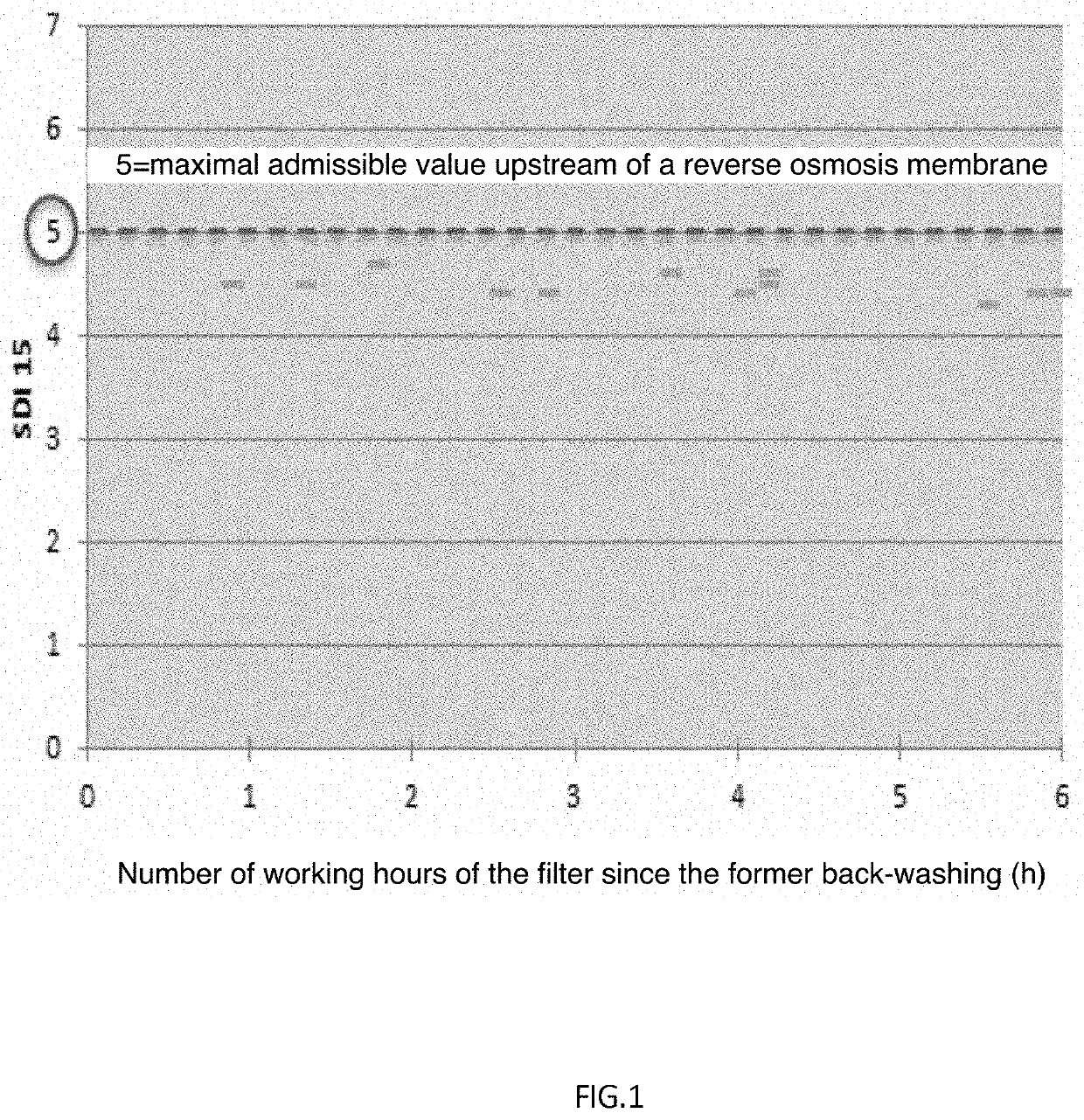Method for treating seawater by bioflocculation and flotation and corresponding installation
a bioflocculation and flotation technology, applied in the field of water treatment, can solve the problems of difficult seawater and wastewater treatment, seawater and wastewater, etc., and achieve the effect of increasing the nutrient load and encouraging microbial growth
- Summary
- Abstract
- Description
- Claims
- Application Information
AI Technical Summary
Benefits of technology
Problems solved by technology
Method used
Image
Examples
Embodiment Construction
[0081]The inventors have implemented a pilot installation according to the present invention, to enable the treatment of seawater.
[0082]In addition to the seawater-pumping device, said installation is formed by the following devices: a de-chlorination system, a vessel under mechanical stirring into which the biomass carriers have been added, a vessel under pressurized air, a separation vessel, a granular filtration device, a reverse osmosis membrane filtration device. Said installation does not include a device for pressurizing and / or depressurizing said vessels.
[0083]Said vessel under mechanical stirring forming the first zone according to the invention, comprises plastic biomass carriers that are fluidized and held in suspension. These carriers enable sufficient growth of micro-organisms capable of secreting EPSs in free form. 100% of the biomass that grows is in fixed form. There is therefore no biomass in free form. The quantity of biomass carrier is 50% in these trials and the ...
PUM
| Property | Measurement | Unit |
|---|---|---|
| concentration | aaaaa | aaaaa |
| concentration | aaaaa | aaaaa |
| concentration | aaaaa | aaaaa |
Abstract
Description
Claims
Application Information
 Login to View More
Login to View More - R&D
- Intellectual Property
- Life Sciences
- Materials
- Tech Scout
- Unparalleled Data Quality
- Higher Quality Content
- 60% Fewer Hallucinations
Browse by: Latest US Patents, China's latest patents, Technical Efficacy Thesaurus, Application Domain, Technology Topic, Popular Technical Reports.
© 2025 PatSnap. All rights reserved.Legal|Privacy policy|Modern Slavery Act Transparency Statement|Sitemap|About US| Contact US: help@patsnap.com

